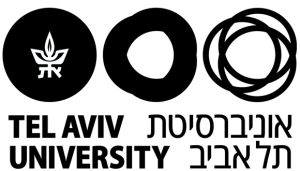Apple, תַּפּוּחַ, Malus
Back to FloraApple
תַּפּוּחַ, tappûaḥ
Malus
Biblical data
Introduction
The common noun תַּפּוּחַ (tappûaḥ) is rare in the Hebrew Bible, only occurring three times in the singular (Joel 1:12; Song 2:3; 8:5) and three in the plural (תַּפּוּחִים, tappûḥîm [Prov 25:11; Song 2:5; 7:9]). Like other plant names, the singular appears to refer to the living plant, the plural to its usable product.
The singular form also occurs eight times as an element in up to seven geographic/personal names: 1) תַּפּוּחַ, a Canaanite city-state (Josh 12:17); 2) a city of the same name in the lowland region of Judah (Josh 15:34); 3) a city of the same name in the territory of Ephraim on the border with Manasseh (Josh 16:8; 17:8, possibly the same as 1); 4) the adjacent region אֶרֶץ תַּפּוּחַ in the territory of Manasseh (Josh 17:8)—with 5) its locale עֵין תַּפּוּחַ (Josh 17:7); 6) בֵּית־תַּפּוּחַ, a city in the hill-country of Judah (Josh 15:53), identified with the modern town of Taffuh (HALOT); 7) תַּפֻּחַ, a Calebite (1 Chr 2:43).
Distribution within the Bible
In the singular it occurs:
- Twice in love poetry (Song 2:3; 8:5).
- Once in prophecy (Joel 1:12).
In the plural it occurs:
- Twice in love poetry (Song 2:5; 7:9).
- Once in wisdom literature (Prov 25:11).
Geographic/personal names in which the singular form serves as an element occur eight times, all in lists: Josh 12:17; 15:34, 53; 16:8; 17:7, 8 [x 2]; 1 Chr 2:43.
Parts, Elements, Features that Are Specified in the Bible
Singular:
- Withering, due to locusts (Joel 1:12)
- Desirable or desire-arousing shade and sweet fruit (Song 2:3)
Plural:
- Apparent medicinal value (Song 2:5)
Pleasant fragrance (Song 7:9)
Function in Context
Singular:
In Joel 1:12, the apple forms the final item in a list of five “trees of the field,” preceded by grapevine, fig, pomegranate, and date palm (הגפן הובישה והתאנה אמללה רמון גם תמר ותפוח כל עצי השדה יבשו). This is a realistic reference to its susceptibility to withering by locusts (Joel 1:12).
- תפוח is contrasted with “trees of the forest” (עצי היער [Song 2:3])—presumably non-fruit-bearing species—as a symbol of the female speaker’s beloved among other males.
- תפוח may possibly serve in a realistic sense as an appropriate stage for human eroticism and conception (Song 8:5)—its shade elsewhere being associated with desire (see above).
Plural:
- The construct תַּפּוּחֵי זָהָב presumably refers to artificial objects made of gold that resemble תפוחים.[1] Nestling within “showpieces of silver” (מַשְׂכִּיּוֹת כָּסֶף), these represent fitting speech (Prov 25:11).
- Paired with “raisin cakes” (?) (אֲשִׁישׁוֹת) as items prescribed (in fanciful, poetic speech) for a lovesick woman (Song 2:5).
- Simile for the fragrance of a woman’s breath; paired with grape clusters from the grapevine (אֶשְׁכְּלוֹת הַגֶּפֶן) symbolizing her breasts (Song 7:9).
End Notes
[1] In contrast to Modern Hebrew, in which תַּפּוּחֵי זָהָב are oranges (Citrus x sinensis).
Contributor: Dr. Raanan Eichler, Department of Bible Studies, Bar Ilan University
History of Identification
Identification History Table
| Hebrew | Greek | Aramaic | Syriac | Latin | Arabic | English | |||||
| Ref | MT | LXX | Revisions | Targumim | Peshitta | Vulgate | Jewish | Christian | KJV | NRSV | NJPS |
| Joel 1:12 | תַּפּוּחַ | μῆλον = apple | חַזוּרִין = apples (plural) | ḥzwr:ˀ = apples (plural) | malum = apple tree | ألتفاحة | apple tree | apple | apple | ||
| Song 2:3 | תַּפּוּחַ | μῆλον | אתרוגא = citron (within midrashic translation) | ḥzwrˀ = apple | malum | ألتفاح | apple tree | apple tree | apple tree | ||
| Song 8:5 | תַּפּוּחַ | μῆλον | A: μήλου
S: μηλέαν Origen: μῆλον |
0 | ḥzwrˀ
|
arbore malo = apple tree | شجرة ألتفاح | apple tree | apple tree | apple tree | |
| Song 2:5 | תַּפּוּחִים | μήλοις | S: μῆλα
Origen: μήλοις |
תפוחי[ן] = apples | ḥzwr:ˀ | malis = apples | ألتفاح | apples | apples | apples | |
| Song 7:9 | תַּפּוּחִים | μῆλα | תפוחין | ḥzwr:ˀ
|
malorum = apples | ألتفاح | apples | apples | apples | ||
| Prov 25:11 | תַּפּוּחֵי זהב | μῆλον (singular) | חזורי = apples | ḥzwrˀ = apple (singular) | mala = apples | تفاح من ذهب | apples | apples | apples | ||
Discussion
Geographic/personal names that include the element תפוח are excluded from this discussion, the ancient translators all employing transliterations that provide no information concerning their understanding of the common noun.
The Septuagint and its revisions, the Targumim, the Peshitta, the Vulgate and the Arabic consistently render the common noun תפוח with terms referring primarily to the apple tree (Malus) or its fruit. The sole exception is the Targum of Song of Song’s translation אתרוגא “citron” in Song 2:3. This rendering being midrashic, however, it provides no information regarding the translator’s understanding of the Hebrew word—תפוחים being translated elsewhere herein as תפוחין “apples.”
Modern scholars follow this consensual tradition, regarding תפוח as an apple tree and תפוחים as apples (Löw 1924–1934, 212–235; Feliks 1968, 60–63; Zohary 1982, 70; Amar 2012, 122–23).
Bibliography
Amar, Zohar. 2012. Flora of the Bible. Jerusalem: Rubin Mass (Hebrew).
Feliks, Yehuda. 1968. Plant World of the Bible. Ramat-Gan: Masada (Hebrew).
Löw, Immanuel. 1924–1934. Die Flora der Juden. 4 vols. Vienna: Löwit/Leipzig: Kohut.
Zohary, Michael. 1982. Plants of the Bible. Cambridge: Cambridge University Press.
Contributor: Dr. Raanan Eichler, Department of Bible Studies, Bar Ilan University
